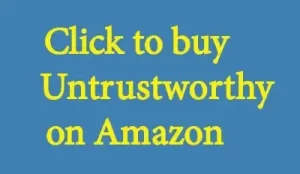Let’s Consider Speculating About the Future
Speculating is fun. However, future predictions can be notoriously inaccurate. I’m still waiting for my flying car, for example.
However, some predictions have been eerily on the nose, such as cell phones, which are a lot like Star Trek’s communicators. So here’s a few idea on how to essentially build your own crystal ball.
For writers, this kind of speculation can be helpful, either to set a scene or to spark some other idea. While science fiction and fantasy are natural genres for this, probably just about any genre could work. Maybe the couple in your romance are inventors.
Or the victims in your horror are dispatched with cutting edge (pun intended) stuff.
Extrapolation
The easiest way to speculate and predict is to take what currently exists, and then extrapolate from that.
Transportation
For example, consider transportation. Your car gets a certain degree of fuel efficiency and it has a particular top speed. It holds a certain number of people. And it has a particular styling. So what happens when you stretch those characteristics?
And so you can consider a car that can go faster yet safely. Maybe your futuristic vehicle is self-driving, or a robot ‘drives’ it.
Since parking can be a pain in a lot of places, why not think up a car which can park itself, or can fold up so it doesn’t need a conventionally-sized parking spot? Maybe your new car is partly powered by solar or nuclear fusion. And how sleek and aerodynamic should it be?
Communications
And you can consider other basic areas of life. Let’s look at communications next. Because nearly all of us already have smart phones, think about the trends. Sometimes, phones get smaller, and are more lightweight and compact. However, at other times, they become larger and almost could be thought of as tablet hybrids.
What do your characters need? And what are the limitations on either scenario? How small can a phone become? How large?
Can it be embedded?
Speculating About Feeding the World
So what about food? People still starve. However, that’s usually due to distribution problems rather than growing enough crops or the existence of enough arable land. Hence how do your characters (or your setting) solve this problem?
And so you can look at any basic area of life, from finding love to consuming entertainment or buying clothing. See where extrapolation takes you.
Employment
When I graduated from undergrad, in 1983, there was no such thing as social media. In fact, I well recall cutting and pasting paragraphs in papers by literally cutting and pasting. Sorry, rain forest!
While computers already existed of course, they had not made it to the mainstream yet. But once the price started to drop, in the late 80s, mid 90s or so, computers started to become more ubiquitous.
So, that year, the prospects for employment using a computer were really just programmer or someone who taught programming.
Now, of course, many of us use our computers every day at work. And this doesn’t even get into how often we check and use our cell phones. But back in that year, would any of us have come up with so many varied uses for computers in work?
And what about AI?
Off the Wall
And then there’s the somewhat pie in the sky, kinda crazy stuff. For example, let’s think about the second Back to the Future film. Doc Brown uses fusion power to make the DeLorean go, but one of the things he grabs for fuel is a discarded banana peel. What a brilliant off the wall idea!
Off the Wall Fashion
So let’s look at, say, fashion. Maybe it’s the opposite of today, where everything is covered up but genitalia. But what kind of a society would support that?
Or maybe everyone wears a uniform, but the uniforms look really odd.
Consider hair when you consider future fashions. Does the mullet make a mainstream comeback? Or do we all just say to hell with it and shave our heads?
More Speculating Out of My Overly Fertile Imagination
Cars could be six stories tall. Communications could be facilitated with chewing gum. Maybe you vote telepathically. The sky, as always, is the limit.
Takeaways for Speculating About the Future
In short, thinking about our future, you may want to consider today, back a few decades, when today was the future. How did everything change? Was it gradual or radical? Did celebrities and influencers steer the ship? Or did it come up from grass roots?
Depending on your genre, and how much room there is for humor, your ideas about the future can go in any number of directions.
Decide on how plausible you want everything to be. And don’t forget to take into account professional predictions like Moore’s Law when speculating about the future!
Leave a Comment





You must be logged in to post a comment.